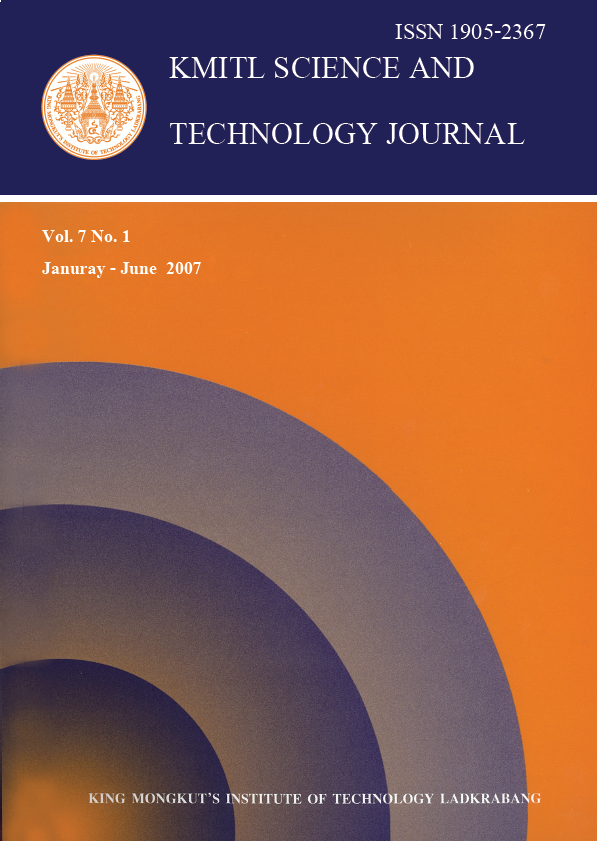Determination and Assessment of Heavy Metal Content in Fish and Shellfish Aba River, Abia State, Nigeria
Main Article Content
Abstract
Levels of lead (0.064 µg/l), iron (0.8 µg/l), zinc (4.82 µg/l), copper (0.19 µg/l), arsenic (0.05 µg/l), manganese (0.03 µg/l), chromium (0.005 µg/l) and mercury (0.01 µg/l) were determined in the water and in some fish and shellfish from Aba river, Nigeria. They were found to be below the maximum allowable levels set by the United States Environmental Protection Agency (USEPA), except for lead, iron and mercury. This implies that the waste assimilation capacity of the river is high, a phenomenon that could be ascribed to dilution, sedimentation and continuous water exchange. Emperical evidence shows that the metals were at low levels in these organisms. However, when compared with levels determined in fish from a rural river, relative enrichment, ranging from 0.01 for lead to 1.5 for zinc, were observed in the Aba river fish. This is an indication that urban and industrial wastes discharged into the Aba river has had a significant effect on the ecological balance of the river.
Keywords: Heavy metals, pollution, waste assimilation, lead, fish and shellfish
Corresponding author: E-mail: alfreduba@yahoo.com
Article Details
Copyright Transfer Statement
The copyright of this article is transferred to Current Applied Science and Technology journal with effect if and when the article is accepted for publication. The copyright transfer covers the exclusive right to reproduce and distribute the article, including reprints, translations, photographic reproductions, electronic form (offline, online) or any other reproductions of similar nature.
The author warrants that this contribution is original and that he/she has full power to make this grant. The author signs for and accepts responsibility for releasing this material on behalf of any and all co-authors.
Here is the link for download: Copyright transfer form.pdf
References
[2] Babich, H. and Stoczky, G. 1985. Heavy metals toxicity to microbemediated ecologic processes: a review and potential application to regulatory policies. Journal of Environmental Resources 36, 111-115.
[3] Botkin, D.B. and Keller, E.A. 1998. Environmental Science; Earth as a Living Planet, 2nd Edition. Canada, John Wiley and Sons, Inc.
[4] Cain, J.R, Paschal, D.C. and Hayden, C.M. 1980. Toxicity and bioaccumulation of cadmium in the colonial green algae (Scenedesmus obliquus). Archieves of Environmental Contamination Toxicology, 9, 9-16.
[5] Council on Environmental Quality. 1970. Ocean dumping: a national policy; report to the President. Washington D. C., Government printing office.
[6] Environmental Protection Agency (EPA). 1976. Quality criteria for water, USEPA, 440(9), 76-123. Washington, D.C.
[7] Ezeronye, O.U. and Ubalua, A.O. 2004. Studies on the effect of Abattoir and Industrial effluents on the heavy metals and microbial quality of Aba river in Nigeria. African Journal of Biotechnology. 4(3), 266-272.
[8] Laws, E.A. 1981. Aquatic Pollution. New York, John Wiley and Sons.
[9] Lenssen, N. 1989. The ocean blues. World watch, July/Aug., pp. 26-35.
[10] Nauen, C.E. 1983. Compilation of legal limits for hazardous substances in fish and fishery products, FAO Fish Circulation, 764, 5-91.
[11] Oguntoyinbo, J.S 1982. Climate11: Precipitation 1 In: Nigeria in maps Barbour K.M., eds, London, Hodder and Stoughton, 16-19.
[12] Okoye, B.C.O. 1991. Heavy metals and organisms in the Lagos Lagoon. International Journal of Environmental Studies, 37, 285-292.
[13] Pickering, Q.H. 1980. Chronic toxicity of hexavalent chromium to fathead Minnow (Pipephales promelas). Archieves of Environmental Contamination Toxicology, 9, 405-413.


